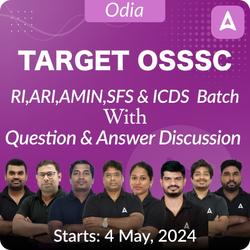Indian paintings are an important part of the country’s cultural heritage, spanning a wide range of styles and periods. For those preparing for the OSSSC RI (Revenue Inspector), ARI (Assistant Revenue Inspector), Amin, SFS, and ICDS Supervisor exams, a solid understanding of notable Indian paintings and their contexts can be crucial. Here are 30 multiple-choice questions (MCQs) to help you prepare.
Top 30 Indian Paintings MCQs For OSSSC RI,ARI, Amin, SFS, ICDS Supervisor
- Which mineral was commonly used to create pigments for pre-historic paintings in the Upper Paleolithic Period?
A. Graphite
B. Ochre
C. Charcoal
D. Limestone
Answer: B. Ochre
Explanation: During the Upper Paleolithic Period, minerals were used to create pigments for painting on the quartzite walls of rock shelters. Ochre, mixed with lime and water, was one of the most common minerals used. - The majority of paintings at Bhimbetka rock shelters belong to which period?
A. Upper Paleolithic
B. Mesolithic
C. Chalcolithic
D. Medieval
Answer: B. Mesolithic
Explanation: Although the Bhimbetka rock shelters exhibit paintings from various periods, most of the paintings belong to the Mesolithic age. - What is the main difference between the paintings found in Ajanta and Bagh caves?
A. Ajanta paintings depict Hindu themes, while Bagh paintings depict Buddhist themes.
B. Ajanta paintings use brighter colors than Bagh paintings.
C. Bagh figures are more tightly modeled, have a stronger outline, and are more earthly and human.
D. Ajanta paintings are more secular, while Bagh paintings are more religious.
Answer: C. Bagh figures are more tightly modeled, have a stronger outline, and are more earthly and human.
Explanation: The Bagh cave paintings are noted for their tight modeling, strong outlines, and earthly, human characteristics compared to the Ajanta cave paintings. - Which period is known for paintings primarily depicting group hunting scenes?
A. Upper Paleolithic
B. Mesolithic
C. Chalcolithic
D. Early Historic
Answer: B. Mesolithic
Explanation: The Mesolithic period is characterized by paintings that are smaller in size and often depict group hunting scenes, along with grazing and riding activities. - Where were the first set of pre-historic paintings discovered in India?
A. Ajanta Caves
B. Ellora Caves
C. Bhimbetka Caves
D. Jogimara Caves
Answer: C. Bhimbetka Caves
Explanation: The first set of pre-historic paintings in India were discovered in the Bhimbetka caves in Madhya Pradesh. - The Armamalai Cave Paintings are primarily associated with which religion?
A) Hinduism
B) Buddhism
C) Jainism
D) Sikhism
Answer: C) Jainism - The central element of the Sittanavasal Cave Paintings depicts:
A) A battle scene
B) A royal procession
C) A pond with lotuses
D) A marriage ceremony
Answer: C) A pond with lotuses - The Ravan Chhaya Rock Shelter paintings are believed to date back to which century?
A) 5th century AD
B) 7th century AD
C) 9th century AD
D) 11th century AD
Answer: B) 7th century AD - The Lepakshi Temple Paintings are noted for their complete absence of which primary color?
A) Red
B) Green
C) Blue
D) Yellow
Answer: C) Blue - The Jogimara Cave Paintings in Chhattisgarh are unique for their inscriptions in which script?
A) Devanagari
B) Brahmi
C) Tamil
D) Kharosthi
Answer: B) Brahmi - The murals in the Badami Cave Temples are primarily associated with which period?
A) Gupta period
B) Chola period
C) Chalukya period
D) Vijayanagara period
Answer: C) Chalukya period - The term ‘miniature’ in Miniature Paintings is derived from which Latin word?
A) Minimus
B) Miniare
C) Minutiae
D) Minimus pictura
Answer: B) Miniare - The Pala School of Art primarily flourished during which centuries?
A) 5th-8th centuries AD
B) 8th-12th centuries AD
C) 12th-15th centuries AD
D) 15th-18th centuries AD
Answer: B) 8th-12th centuries AD - The Apabhramsa School of Art traces its origin to which regions in India?
A) Bengal and Bihar
B) Kerala and Tamil Nadu
C) Gujarat and Rajasthan
D) Madhya Pradesh and Chhattisgarh
Answer: C) Gujarat and Rajasthan - The medium used for painting in the Sittanavasal Caves involved:
A) Oil paints on canvas
B) Watercolors on paper
C) Vegetable and mineral dyes on wet lime plaster
D) Acrylics on wood
Answer: C) Vegetable and mineral dyes on wet lime plaster - The coming of the Muslims in the Indian subcontinent in the 14th century led to:
a) Complete abandonment of traditional Indian art styles.
b) A cultural renaissance and synthesis with existing traditions.
c) Isolation of Indian art from other cultural influences.
d) Predominance of only Persian art forms.
Answer: b) A cultural renaissance and synthesis with existing traditions. - During the transition period, the Southern States of Vijayanagara developed a painting style that was:
a) Identical to the Mughal style.
b) Closer to the Deccan style of painting.
c) Dominant over Western Indian styles.
d) Completely different from Deccan style.
Answer: b) Closer to the Deccan style of painting. - One key feature of the transition period miniatures was:
a) Use of vibrant colors with realistic human figures.
b) Flat application of colors with human outlines demarcated in black.
c) Focus on religious themes and iconography.
d) Detailed replication of natural landscapes.
Answer: b) Flat application of colors with human outlines demarcated in black. - Miniature art during the Delhi Sultanate was notable for:
a) Completely abandoning Indian traditional elements.
b) A synthesis of Persian and Indian traditional elements.
c) The exclusive use of Persian themes and techniques.
d) Focusing solely on religious manuscripts.
Answer: b) A synthesis of Persian and Indian traditional elements. - The early Mughal painters who influenced Humayun’s court after his return from Persia were:
a) Bihzad and Daswanth.
b) Mir Sayyid Ali and Abdus Samad.
c) Basawan and Kesu.
d) Ustad Mansoor and Bihzad.
Answer: b) Mir Sayyid Ali and Abdus Samad. - Akbar’s painting studio, Tasvir Khana, was known for:
a) Only employing Persian artists.
b) Developing lifelike images and employing both Persian and Indian artists.
c) Focusing solely on religious themes.
d) Rejecting Indian influence in art.
Answer: b) Developing lifelike images and employing both Persian and Indian artists. - During Jahangir’s reign, Mughal paintings were most renowned for:
a) Depictions of court life and historical events.
b) Naturalistic paintings of flora and fauna.
c) Abstract themes and minimalism.
d) Exclusively religious subjects.
Answer: b) Naturalistic paintings of flora and fauna. - Under Shah Jahan’s reign, Mughal painting style saw:
a) A shift to more naturalistic depictions.
b) The introduction of European influences and increased use of gold and silver.
c) A complete abandonment of Mughal painting traditions.
d) A focus on religious and spiritual themes.
Answer: b) The introduction of European influences and increased use of gold and silver. - The decline in Mughal painting activities occurred during the reign of:
a) Babur.
b) Akbar.
c) Jahangir.
d) Aurangzeb.
Answer: d) Aurangzeb. - The Rajput School of painting emerged due to:
a) Complete independence from Mughal influence.
b) The arrival of artists from the Mughal atelier and local traditions.
c) Solely indigenous artistic practices with no external influence.
d) Uniformity with Deccan Sultanate styles.
Answer: b) The arrival of artists from the Mughal atelier and local traditions. - Who was the most extraordinary painter of the Mewar School of Painting in the 17th century?
A. Nihal Chand
B. Raja Ravi Varma
C. Sahibdin
D. Abanindranath Tagore
Answer: C. Sahibdin - Which literary texts were depicted by Sahibdin in his Mewar paintings?
A. Ragamala, Ramayana, and Bhagavata Purana
B. Mahabharata, Bhagavad Gita, and Vedas
C. Geeta Govinda, Rasamanjari, and Shiva Purana
D. Satsai of Bihari, Gita Govinda, and Nal Damayanti
Answer: A. Ragamala, Ramayana, and Bhagavata Purana - After Sahibdin’s death, what became a prominent theme in Mewari paintings?
A. Depictions of Mughal courts
B. Life at court in Mewar
C. Religious rituals
D. Daily life of common people
Answer: B. Life at court in Mewar - What is unique about the ‘tamasha’ paintings of the Mewar School?
A. They use vibrant colors and geometric patterns.
B. They show court ceremonial and city views in unprecedented detail.
C. They depict only religious events.
D. They focus exclusively on Mughal architecture.
Answer: B. They show court ceremonial and city views in unprecedented detail. - During whose reign did the kingdom of Mewar agree to Mughal suzerainty?
A. Akbar
B. Aurangzeb
C. Jahangir
D. Shah Jahan
Answer: D. Shah Jahan










